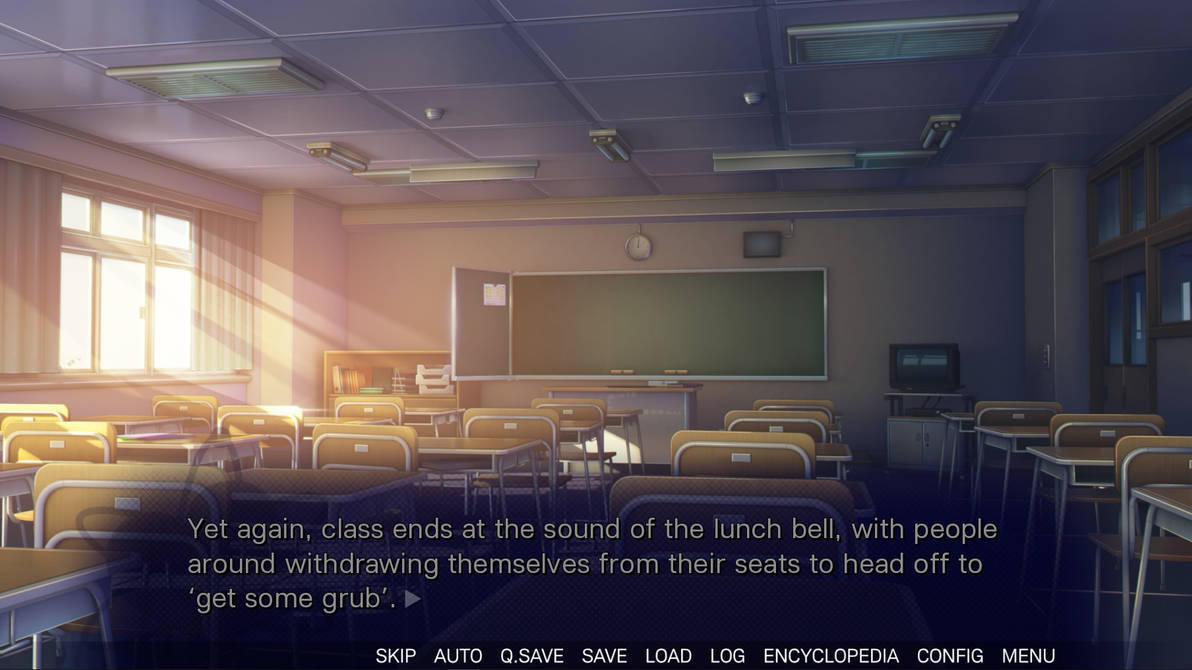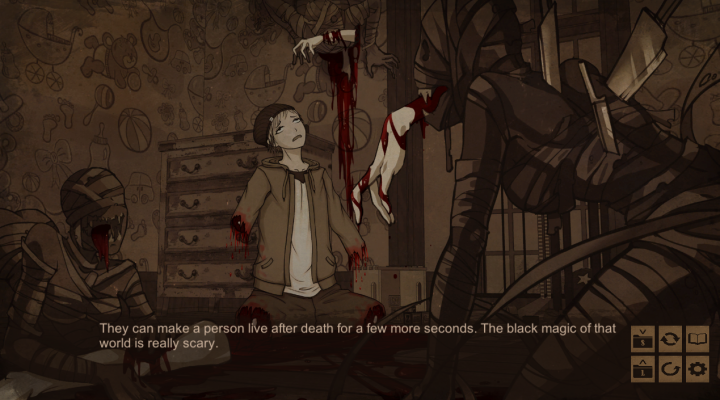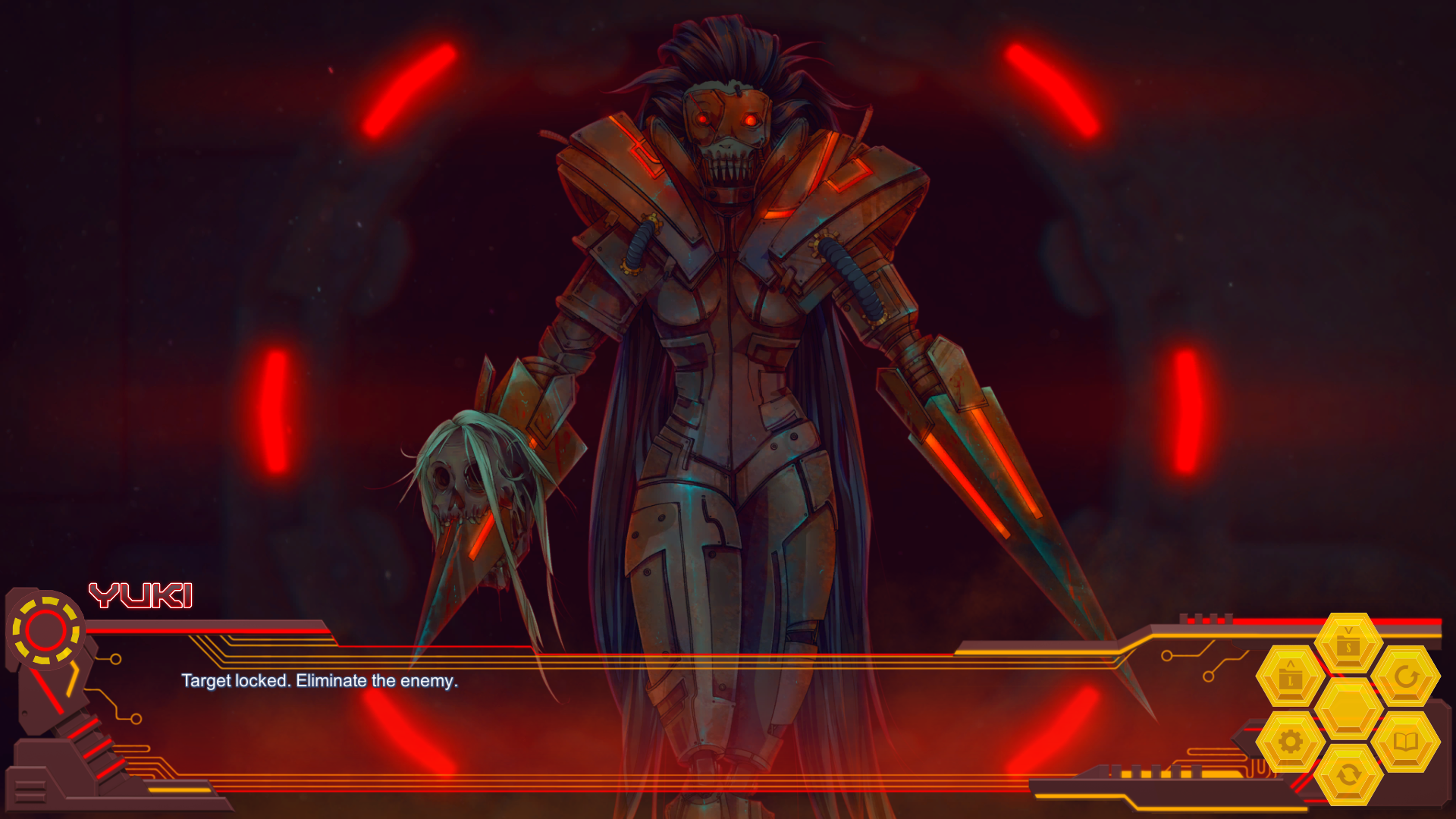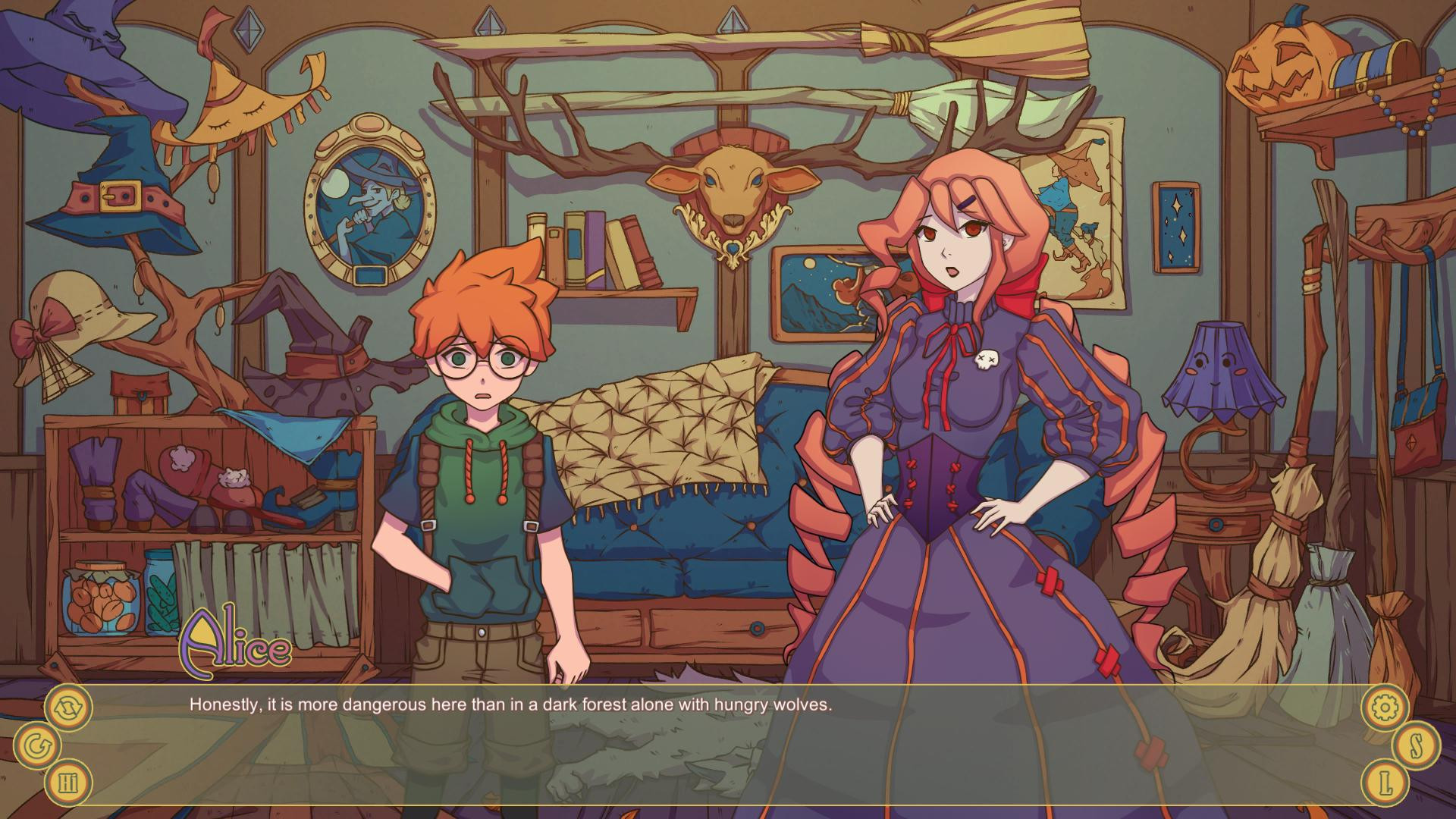
You probably saw many cataclysms in stories you’ve read or watched in the past. Disasters that were natural, technological or magical in nature, limited in scale or apocalyptic, resulting in short-lived crises or civilisation-ending. From Muv-Luv through Swan Song to I Walk Among Zombies, plot-oriented visual novels never shied away from presenting these kinds of scenarios, and along with literature, they’re uniquely positioned to explore deeper consequences they could have for both individuals and whole societies.
Fallstreak, a free game released on Steam on October 2018 as a debut title of a small studio under the name Centicerise Productions, is one less-common EVNs tackling this topic. It does so by focusing heavily on a group of people affected by such a catastrophic event – mostly average folk, crippled physically and emotionally by the mysterious Fire of Collapse that ravaged their isolated country without a warning or identifiable source. It’s also, generally speaking, a wonderfully-produced piece of VN that I’m wary of recommending to people due to its surprisingly extreme content and open-ended story, quite clearly meant as an introduction to its world and a prologue to future games utilizing the same setting. So, what are the main reasons to check it out, or to skip on visiting the fantasy realm of Socotrine at least until Fallstreak’s continuation shows up?
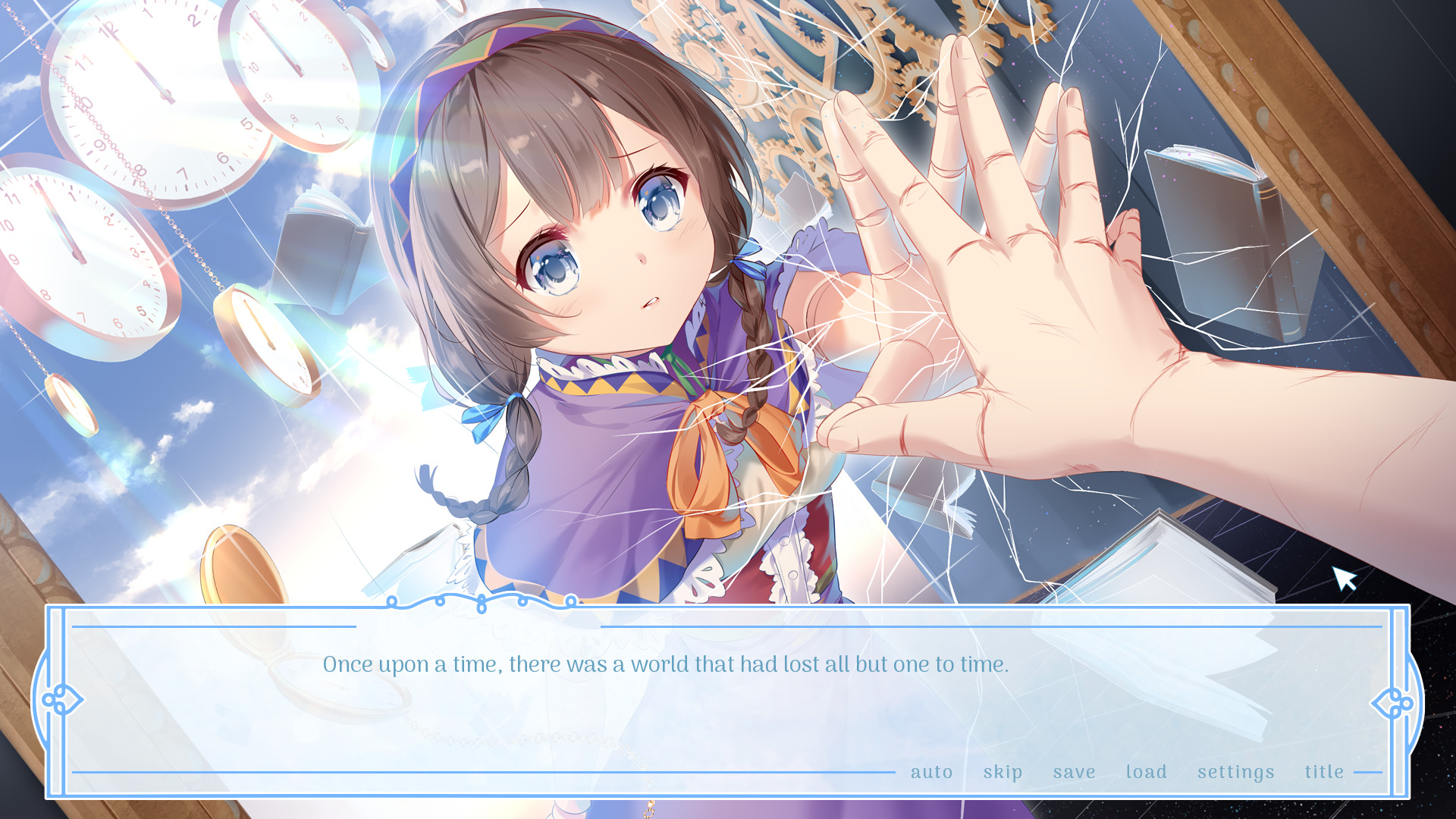
The amount of stories-within-a-story and subplots that are never elaborated upon makes Fallstreak feel more like a prologue leading to a proper story than a standalone experience
Fallstreak’s Steam page claims that the game’s protagonist is Adelise Cotard, the daughter of Socotrine’s ruler and a little girl with a mind of an adult. Atypically mature due to the time she spends in the Golden Dream, a lucid dreamworld full of knowledge which she enters nearly every night, Ade is indeed the character through which we initially experience the story. These introductory chapters, rather relaxed and light-hearted, mostly follow her and her group of friends through some everyday situations – a normal life in which only physical scars some of them bear and occasional reminiscence hint at the dramatic past. However, she’s neither sole focus nor the only protagonist of the game. In its second half, when we start learning about other characters’ backstories and the details of Fire of Collapse though flashbacks, she’s not only pushed to the background but mostly absent, with crucial events taking place before she was even born. At this point, the game switches perspectives on a regular basis, focusing mostly on various members of the Lirit family, whose children are Adelise’s classmates in a private school for those orphaned or otherwise affected by the cataclysm.
In the meantime, we’re also introduced to a ton of interesting information about Socotrine itself, a land isolated from the outside world by the apparently impassable, magical mist. Its impoverished, but stable history was shaken up by the arrival of a refugee convoy from beyond the barrier, around 20 years before the game’s main events. Bringing with them advanced technology and knowledge of the outside world, refugees affected drastically both the land’s political balance and the way of life of its people. Eventually, the convoy’s “Lost Children” revolted against the ruling aristocracy of Socotrine and brought in an era of prosperity. At the same time, the game opens many questions about their origins, actions after traversing the mist and their connection to the Fire of Collapse which nearly destroyed the whole realm. Adelise’s personal story is also apparently related to much of this, with the Golden Dream, her father’s dethronement of the Lost Children’s leader and her mother’s death all signalized as mysteries crucial to understanding Socotrine’s predicaments, although without many hints on how they’re actually significant.

Fallstreak’s story turns bleak without much warning and introduces scenes that wouldn’t be out of place in the darkest of horror stories – it’s not a VN for those faint of heart
If this sounds like a lot to fit into a relatively short, 80k-word VN, it definitely is. I also skipped a number of lore details and subplots that could be considered spoilers, and as you can imagine, very few of those receive any kind of answer or satisfying conclusion. The game does not shy away from extensive infodumps and introducing character after character, many of them either signalizing stories that might be told in the future or being little more than exposition props. It also includes allegorical stories-within-the-story, told by various characters, which further draw the readers attention away from its actual plot-points and protagonists. At times the memorable, high-quality visual design and solid characterisation are main things preventing it from devolving into an incomprehensible mess. The unique characters and the sheer beauty of all visual assets make it easier to get immersed in the world and look past the absolute overload of story threads the game bombards you with, without ever tying most of them together. It's also impossible to deny that the setting itself and the mysteries associated with it are well-thought-out and rather imaginative, making you want to know more.
While the pacing is definitely an issue in Fallstreak, the most problematic part might still be its tone: it often jumps from rather relaxing slice-of-life moments to unsettling mysteries, and then to over-the-top tragedy and absolutely grotesque violence. The aforementioned backstory of the Lirits is full of gut-wrenching moments, drastic enough to disturb even a relatively experienced and desensitized reader like me. I’m not sure all of them belonged in this story – some very much balanced on the border of absurdity and if they had a real narrative function beyond the sheer shock factor, it’s not clear at this point. It’s not a massive problem if you can handle that kind of content, but it definitely makes Fallstreak not an experience for everyone, especially because the intensity of these segments was not properly signalized by previous events and very much caught me by surprise.

The visual design of Fallstreak is impeccable and helps a lot in fleshing out its characters and world, making them surprisingly memorable
If what I wrote so far paints a pretty bleak picture, it’s because Fallstreak’s problems could’ve been fatal if not for how just this polished and well-put-together it is. The prose and dialogue, despite the heavy exposition and anachronistic jokes that I’m not sure make sense in the setting, are very solid. Elements such as character’s speech patterns and personality quirks save them from being forgettable in the overcrowded storyline. And in the end, it’s the beautiful visuals and music that really make it stand out. The characters look distinct and expressive, while backgrounds and CGs are hard to take your eyes off. The assets are also pretty abundant for a free VN, with just enough environments, sprite variants and full illustrations to consistently keep things fresh. The original soundtrack is very climatic, with mostly sombre piano tunes underlining the sad reality of the game’s world. It all comes together in a way that I’m not sure I’ve seen in another free VN.
So, ultimately, what do I make out of Fallstreak? It’s definitely not a bad game and the main problems it suffers from came rather from the developers being overly ambitious than a lack of effort. They definitely tried to fit too much into one package and didn’t follow up properly with new chapters. If I read it right and it is a starting point for a commercial franchise, we should already be seeing much more concrete signals about its continuation than the sporadic teasers present on the developer's social media. It’s not an abandoned project, considering I was directly approached by the studio behind it not a long time ago and the latest updates on the continuation are fairly recent, but whether you should read it depends mostly on whether you’re ok with reading a story that is essentially unfinished (and is going stay like that for a while), and whether you're willing to deal with its grimdark elements. For me, it was definitely worth the time I’ve spent reading it and as a free VN, that time is all it will ever ask from you.
Final Score: 3/5
Pros:
+ Beautiful visuals
+ Climatic soundtrack
+ Memorable main characters
Cons:
– Frequent infodumps and clunky exposition
– Gets over-the-top with the brutality of the backstories
– Feels more like a prologue than a full story
VNDB Page
Play Fallstreak for free on Steam

